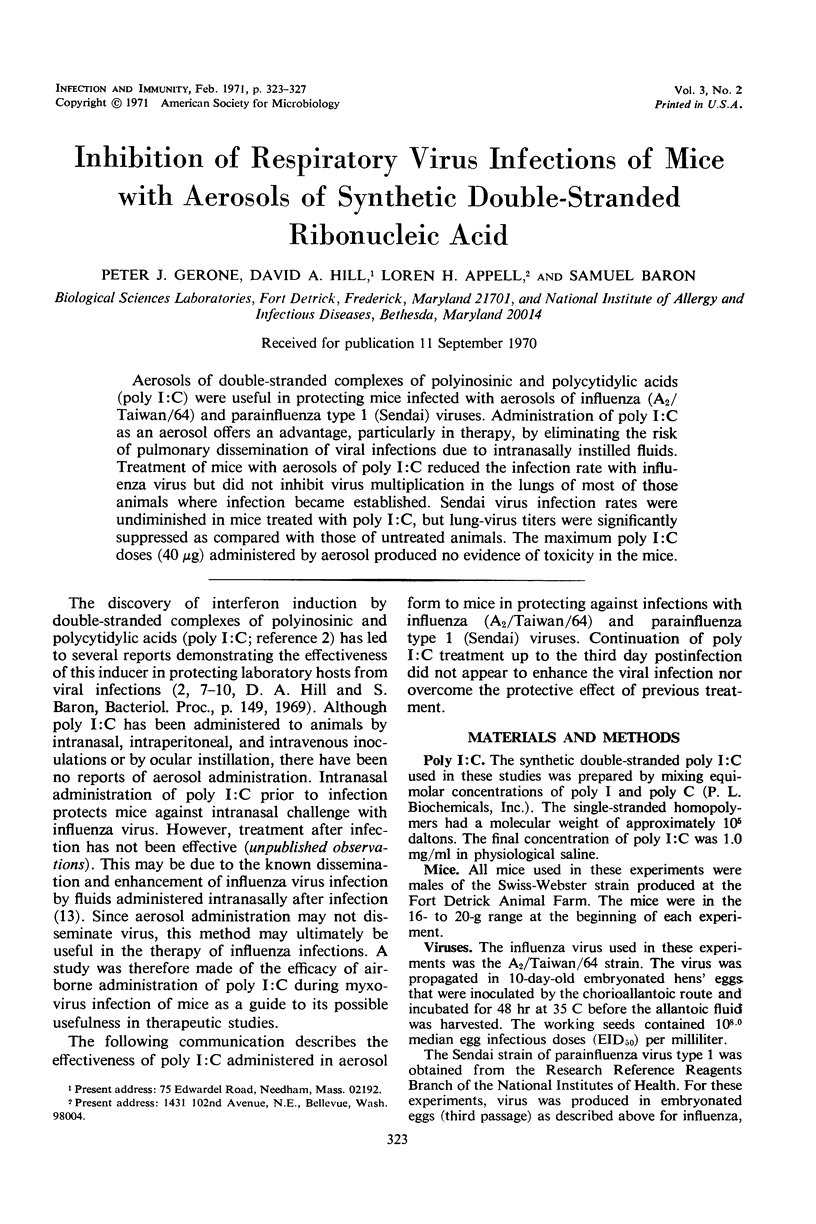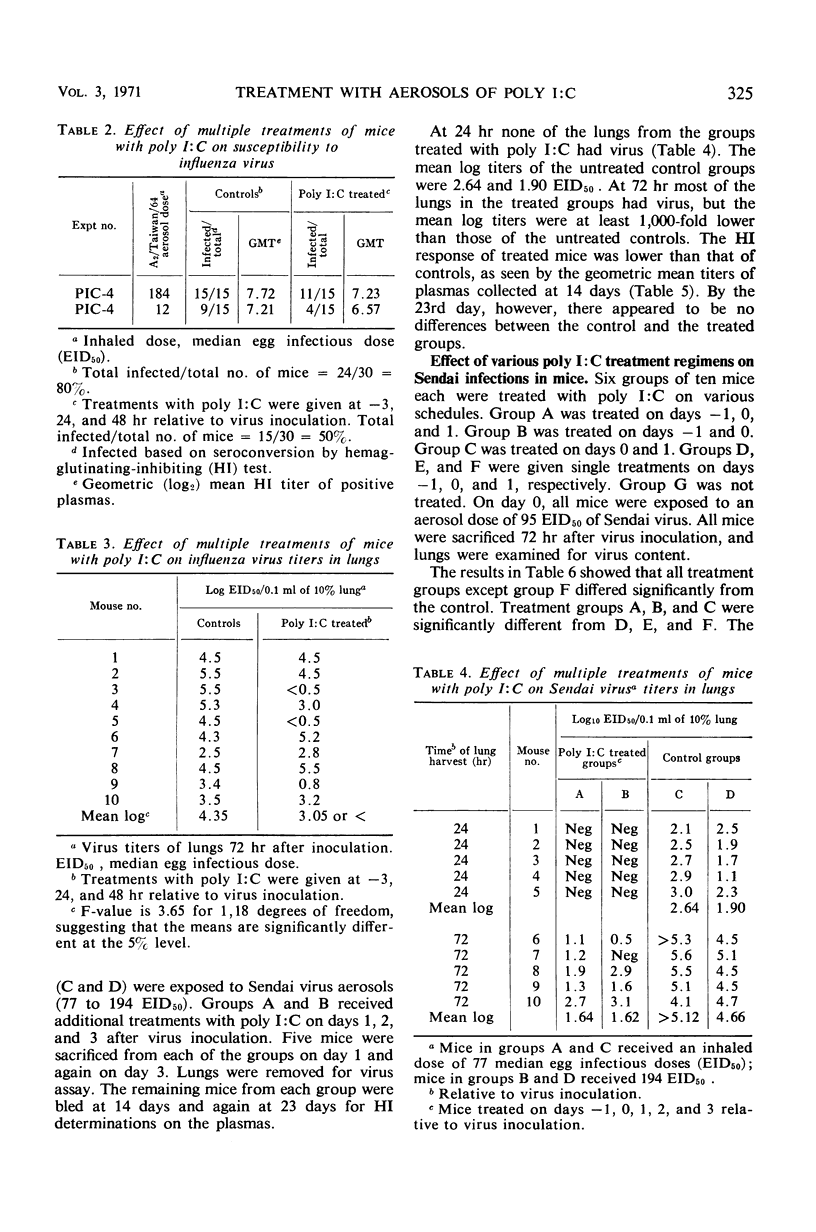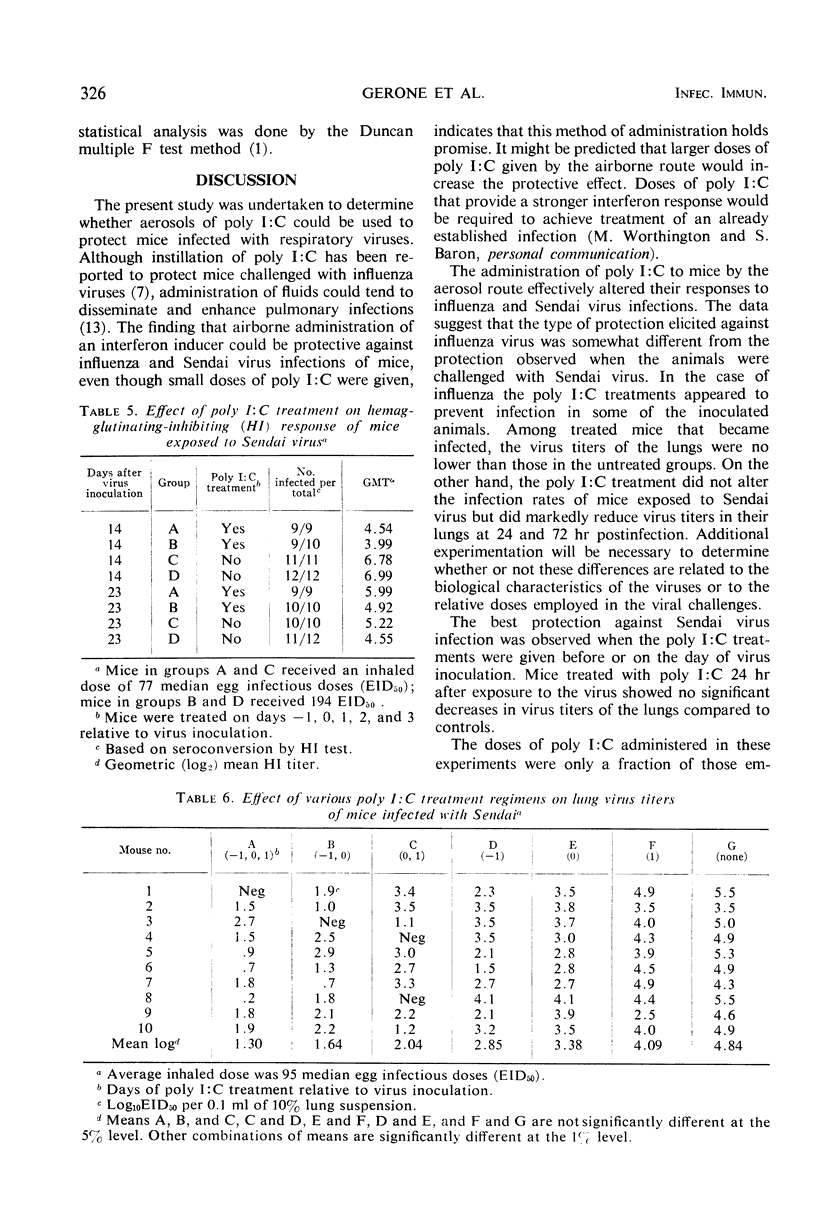Abstract
Aerosols of double-stranded complexes of polyinosinic and polycytidylic acids (poly I:C) were useful in protecting mice infected with aerosols of influenza (A2/Taiwan/64) and parainfluenza type 1 (Sendai) viruses. Administration of poly I:C as an aerosol offers an advantage, particularly in therapy, by eliminating the risk of pulmonary dissemination of viral infections due to intranasally instilled fluids. Treatment of mice with aerosols of poly I:C reduced the infection rate with influenza virus but did not inhibit virus multiplication in the lungs of most of those animals where infection became established. Sendai virus infection rates were undiminished in mice treated with poly I:C, but lung-virus titers were significantly suppressed as compared with those of untreated animals. The maximum poly I:C doses (40 μg) administered by aerosol produced no evidence of toxicity in the mice.
Full text
PDF




Selected References
These references are in PubMed. This may not be the complete list of references from this article.
- Field A. K., Tytell A. A., Lampson G. P., Hilleman M. R. Inducers of interferon and host resistance. II. Multistranded synthetic polynucleotide complexes. Proc Natl Acad Sci U S A. 1967 Sep;58(3):1004–1010. doi: 10.1073/pnas.58.3.1004. [DOI] [PMC free article] [PubMed] [Google Scholar]
- GOLDBERG L. J., WATKINS H. M., BOERKE E. E., CHATIGNY M. A. The use of a rotating drum for the study of aerosols over extended periods of time. Am J Hyg. 1958 Jul;68(1):85–93. doi: 10.1093/oxfordjournals.aje.a119954. [DOI] [PubMed] [Google Scholar]
- HENDERSON D. W. An apparatus for the study of airborne infection. J Hyg (Lond) 1952 Mar;50(1):53–68. doi: 10.1017/s0022172400019422. [DOI] [PMC free article] [PubMed] [Google Scholar]
- Lindh H. F., Lindsay H. L., Mayberry B. R., Forbes M. Polyinosinic-cytidylic acid complex (poly I:C) and viral infections in mice. Proc Soc Exp Biol Med. 1969 Oct;132(1):83–87. doi: 10.3181/00379727-132-34153. [DOI] [PubMed] [Google Scholar]
- Nemes M. M., Tytell A. A., Lampson G. P., Field A. K., Hilleman M. R. Inducers of interferon and host resistance. VI. Antiviral efficacy of poly I:C in animal models. Proc Soc Exp Biol Med. 1969 Nov;132(2):776–783. doi: 10.3181/00379727-132-34308. [DOI] [PubMed] [Google Scholar]
- Park J. H., Baron S. Herpetic keratoconjunctivitis: therapy with synthetic double-stranded RNA. Science. 1968 Nov 15;162(3855):811–813. doi: 10.1126/science.162.3855.811. [DOI] [PubMed] [Google Scholar]
- Richmond J. Y., Hamilton L. D. Foot-and-mouth disease virus inhibition induced in mice by synthetic double-stranded RNA (polyriboinosinic and polyribocytidylic acids). Proc Natl Acad Sci U S A. 1969 Sep;64(1):81–86. doi: 10.1073/pnas.64.1.81. [DOI] [PMC free article] [PubMed] [Google Scholar]
- SEVER J. L. Application of a microtechnique to viral serological investigations. J Immunol. 1962 Mar;88:320–329. [PubMed] [Google Scholar]


